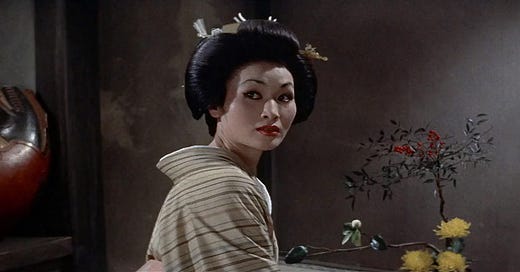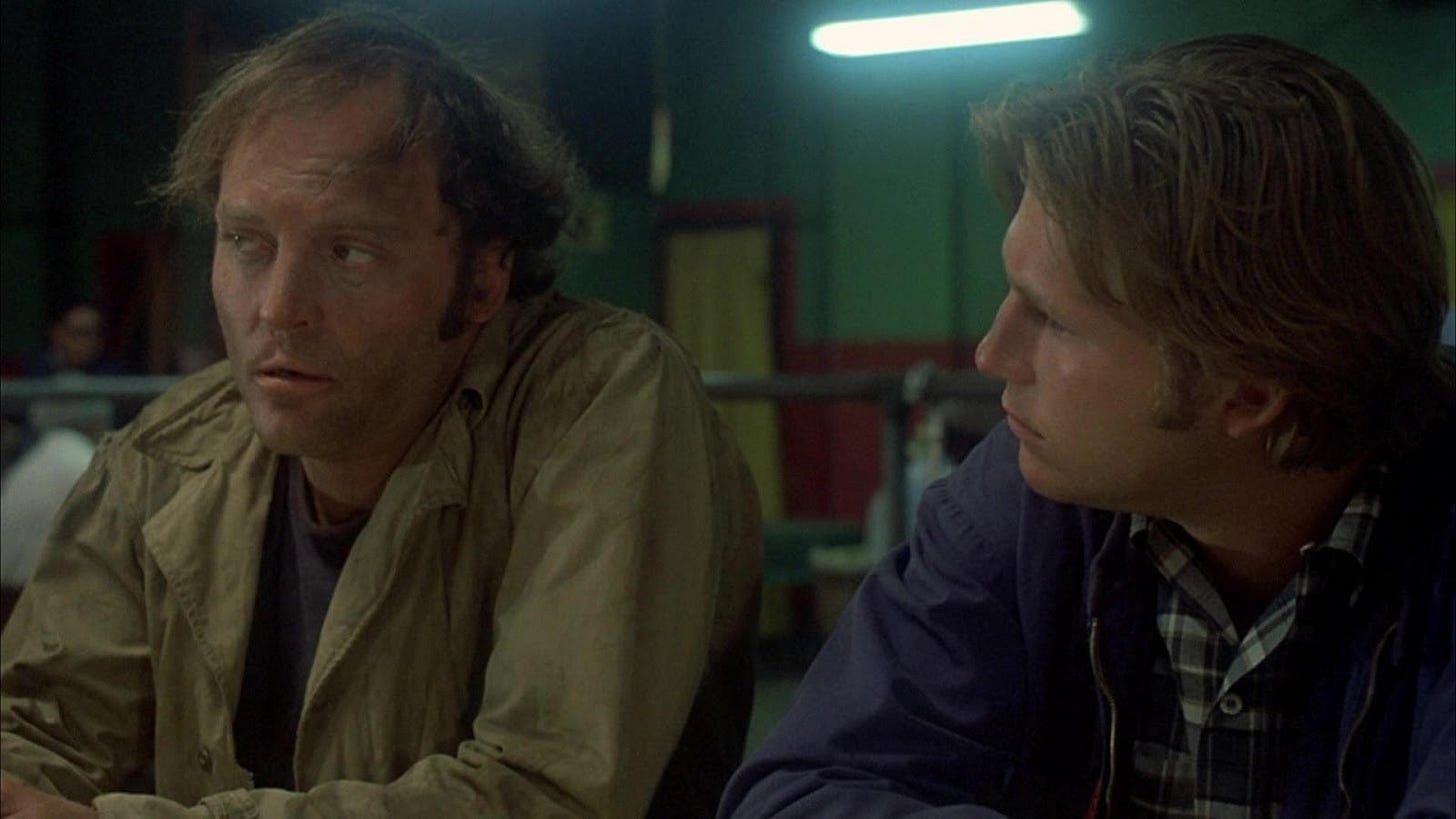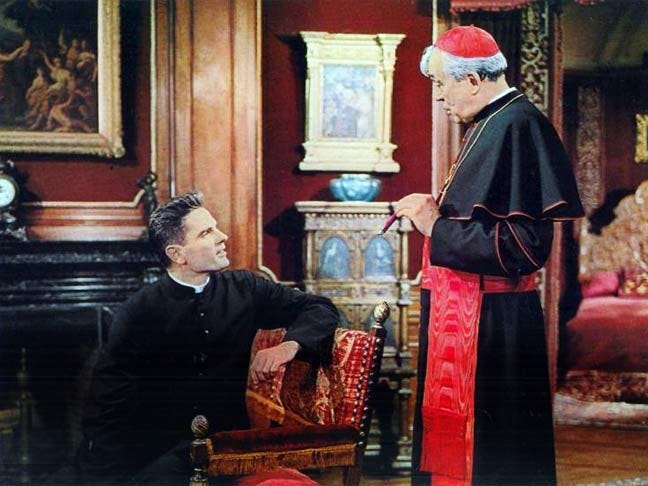It has always seemed to me that John Huston has a reputation as an important, serious filmmaker among those who would otherwise not care much for American cinema. I might be mistaken of course, but either way he is highly regarded and there are many books about him, more so than for most other filmmakers. This is something I have never really understood as I do not find him special, or more interesting or competent, or artistic, than a long line of other filmmakers nobody cares that much about.1
He has undoubtedly made several good films, and many classics that are frequently discussed, shown, and restored. But that is not enough to make somebody special, as this is also true for many other filmmakers, and he has also made more films that are not very good and where there are no particular excuses for their failures than Huston, and his approach to them.
Even so, I have long had the ambition to watch all of his films and now I finally have. The last six holdovers have been watched over the last two weeks, and they were, in chronological order, We Were Strangers (1949), The Barbarian and the Geisha (1958), The Bible: In the Beginning…(1966), Reflections in a Golden Eye (1967), Phobia (1980), and Annie (1982). They do highlight the range of Huston’s filmmaking, and they were all projects that he himself enthusiastically embraced. But they are a weak bunch. The exception is The Barbarian and the Geisha which, to my surprise, I think can be regarded as being among Huston’s best, not least visually. Huston wanted to make something in and about Japan after having seen, and being very impressed by, Teinosuke Kinugasa’s Gate of Hell (1953).2
What is impressive with The Barbarian and the Geisha, besides Charles G. Clarke’s images, is that it was shot entirely in Japan, and with a cast of only Japanese actors except the two Americans, played by John Wayne and Sam Jaffe, and a lot of the dialogue is in Japanese.
Huston did many films abroad, in the UK, in Africa, in India, and elsewhere. He had his themes (such as that the world is a treacherous place where men often bring themselves down due to flaws in their characters), and he was eager to try new things, and to experiment visually, not least with colours. He had a darkly humorous side, and he liked to gamble. There is a lot to admire in his career. But too many of the films are dull and uninteresting, and too many of those that are not dull or uninteresting have flaws, such as being too obvious and preachy. That includes The Treasure of the Sierra Madre (1948), which is in many ways impressive, but also flawed. Fat City (1972) is also impressive, but it also tries too hard at times. The ending, however, is one of my all-time favourites.
In the 1930s and early 1940s, William Wyler often asked Huston to work on the scripts for Wyler’s films, so Wyler must have felt some admiration and affinity with Huston. But I will insist that Wyler is by far a superior filmmaker; visually, emotionally, in terms of working with actors, and narrative strength. Few of Wyler's films are dull or uninteresting, and many are better than anything Huston made. Someone else with which Huston can be compared is Henry Hathaway, and while Hathaway has not made any film that I think is better than Huston’s best, Hathaway can be just as good, and his oeuvre is more consistent in terms of quality. If I were asked to re-watch all of Huston’s films or all of Hathaway’s films, I would choose to re-watch Hathaway’s without thinking twice. Another one whom it is relevant to compare Huston with is John Sturges, and here I also prefer Sturges. (I have watched almost all of these directors’ films, and the ones I have not watched yet are a few of their first films, such as three of Hathaway’s B-westerns from 1932/1933.)3
In case of fire, and I could rescue only one of Huston’s films, it would be The Misfits (1963), the only one of his films you could say I love. And here are some good ones that I have not mentioned above: The Maltese Falcon (1941), The Asphalt Jungle (1950), Red Badge of Courage (1951), Moulin Rouge (1953), The Night of the Iguana (1964), The Man Who Would Be King (1975), and Wise Blood (1980).
Maybe I should also include The Dead (1987), but it was a long time since I saw it and I do not know how I would feel about it today. But his documentaries made during World War 2 are among his best work, not least Let There Be Light (1946).
Huston as actor should also be part of any assessment of his career. He was a great actor. His performances in, say, The Cardinal (1963) and Chinatown (1974) are terrific, oozing charm and menace in equal parts, the charm and the menace feeding each other, the one giving strength to the other. These performances are among his best work.
It is likely the case that many have held him in such high regard due to his lifestyle and adventures, a big game hunter and fighter, battling the system.
It is sometimes called Japan’s first colour film, but this is not true. Carmen Comes Home (1951) is the first, or at least earlier than Gate of Hell. It was directed by Keisuke Kinoshita.
And there are many who are far superior to Huston, like Wyler, but much less talked about or written about, such as Otto Preminger, Anthony Mann, and Don Siegel.







Your assessment of John is reasonable. But I feel inclined to point out that John was a director of a certain era in Hollywood. He was trusted with money actors and he delivered. I’m certain there are many young directors who don’t even know who he is even though they may have seen a movie here or there. I’ve read a lot of books about him, maybe more than his films. I’m not sure that he will stand the test of time from an artistic perspective, but he was a staple, if not a giant in the movie industry. Also, I have watched the man who would be King every year for decades. He was a man’s man and many actors liked his energy, though frequently it was reckless.
Pity that Welles did not have even some of the capacity that Huston to accommodate hte commerical reality of film making.
The Huston filmography has some great achievements - Sierra Madre, Ashphalt Jungle, Maltese Falcon, the Dead, Prizzi's Honor.
In fact, Huston would have been more consistent in quality if he had fixated on noir, instead all of his insane digressions in genre, such as Moulin Rouge , Annie, the Bible etc.
But I never think of him anywhere close to what Hawks, HItchcock, Sirk, Lang , Ford , let alone Welles achieved in the classic Hollywood period.
Let alone Reed in England or Jean Pierre Melville in France.